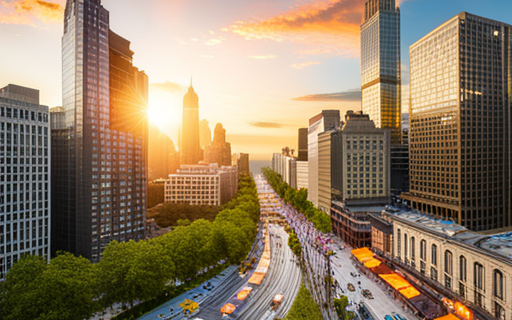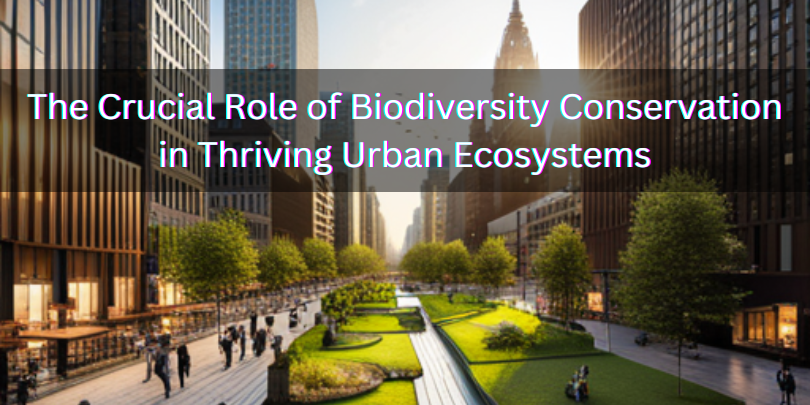Striking a balance between human expansion and environmental conservation becomes increasingly complex as cities burgeon and landscapes evolve. One pressing concern is the urgent need to preserve biodiversity in urban settings. Biodiversity, the rich tapestry of life on Earth, is indispensable for ecosystem health and stability. Moreover, its protection in urban landscapes is vital for long-term ecological balance and harmonious human coexistence.
The Untapped Potential of Urban Green Spaces
Far from being mere concrete jungles, cities actually hold immense potential to harbor diverse ecosystems. Elevating the importance of urban green areas is a critical step in this direction. Remarkably, parks, gardens, green roofs, and urban woods can serve as sanctuaries for a wide array of plant and animal species. These nature havens amid the sprawling cityscape act as crucial stepping stones for migrating species and offer vital habitats for countless organisms. Plus, green spaces elevate the well-being of city dwellers by enhancing air quality and moderating temperatures.
Charting a Sustainable Future for Urban Biodiversity
The fate of urban biodiversity largely hinges on the strategic planning and design of sustainable cities. Implementing green infrastructure not only enhances environmental health but also adds visual allure to urban landscapes. Designs that incorporate wildlife corridors—uninterrupted natural habitats—contribute to averting species extinction by facilitating movement and fostering genetic diversity. Additionally, prioritizing native plants in urban gardens and landscapes naturally attracts local fauna and pollinators.

Obstacles and Roadblocks
Yet, formidable challenges stand in the way of biodiversity conservation in urban environments. The fierce competition for space leads to habitat loss, fragmentation, and degradation. As a result, many species face a tough choice: adapt or risk extinction. Further complicating the equation, invasive species often disrupt native ecosystems, necessitating innovative solutions to reconcile the demands of environmental preservation and urban expansion.
The Power of Community Involvement
Community engagement plays an indispensable role in the effective conservation of urban biodiversity. Educating residents fosters a sense of ownership and responsibility towards their local ecosystems. Community-driven projects, like citizen science and urban gardening, not only aid in biodiversity conservation but also strengthen neighborhood bonds. Furthermore, involving communities in urban planning decisions often leads to more inclusive and eco-friendly solutions.
Pioneering Approaches for Urban Ecosystem Revitalization
Promising initiatives are beginning to emerge that offer hope for the challenging task of preserving urban biodiversity. Habitat restoration projects transform vacant or degraded areas into vibrant green spaces. The emerging concept of “biophilic design” integrates natural elements into urban construction, creating environments beneficial to both human and non-human life.
Conclusion: A Commitment to a Sustainable Future
Preserving biodiversity in urban settings is not merely an ecological imperative; it’s also a testament to our commitment to an inclusive and sustainable future. Urban green spaces serve as a bridge between environmental conservation and human progress. To delve deeper into biodiversity conservation strategies, visit our EAT Community and join a community committed to adopting sustainable ecological practices.
Ready to make a difference in your urban community and contribute to a more sustainable, biodiverse future? Join us in this critical mission! Here’s how you can get involved:
- Join our EAT Community: Join our EAT Community and dive deeper into actionable strategies for conserving urban biodiversity and learn from experts in the field.
- Share This Article: Knowledge is power. Spread the word on the importance of biodiversity in urban settings by sharing this article with your network on social media, using the hashtag #UrbanBiodiversityMatters.
- Participate in Community Efforts: Whether it’s a local tree-planting event, a citizen science project, or a community garden, your involvement makes a tangible impact.
- Speak Up: Advocate for sustainable urban planning in your community. Attend town hall meetings, engage with local leaders, and voice your support for green initiatives.
- Donate or Volunteer: Support organizations working to promote urban biodiversity. Your time and contributions can make a world of difference.
Don’t just stand on the sidelines—be a part of the solution! Click below to become an active member of a community dedicated to building sustainable, biodiverse urban ecosystems for the future.
👇👇👇
Join the Movement for Urban Biodiversity Now!
👆👆👆
By acting today, you’re investing in a greener, more sustainable tomorrow. Let’s turn our cities into thriving ecosystems, together!


Recent Comments